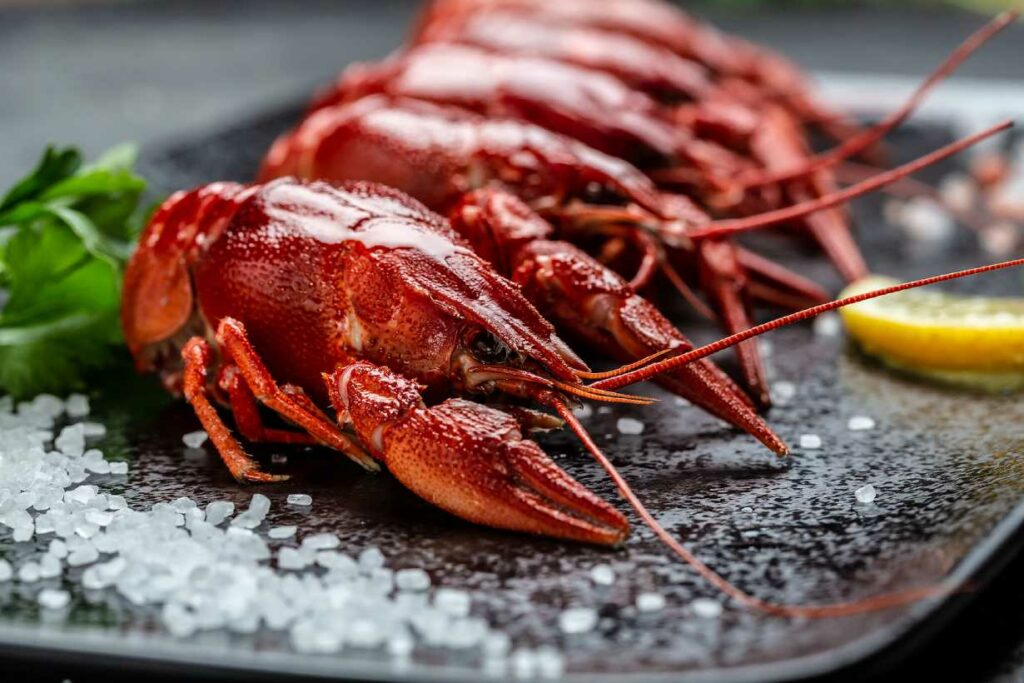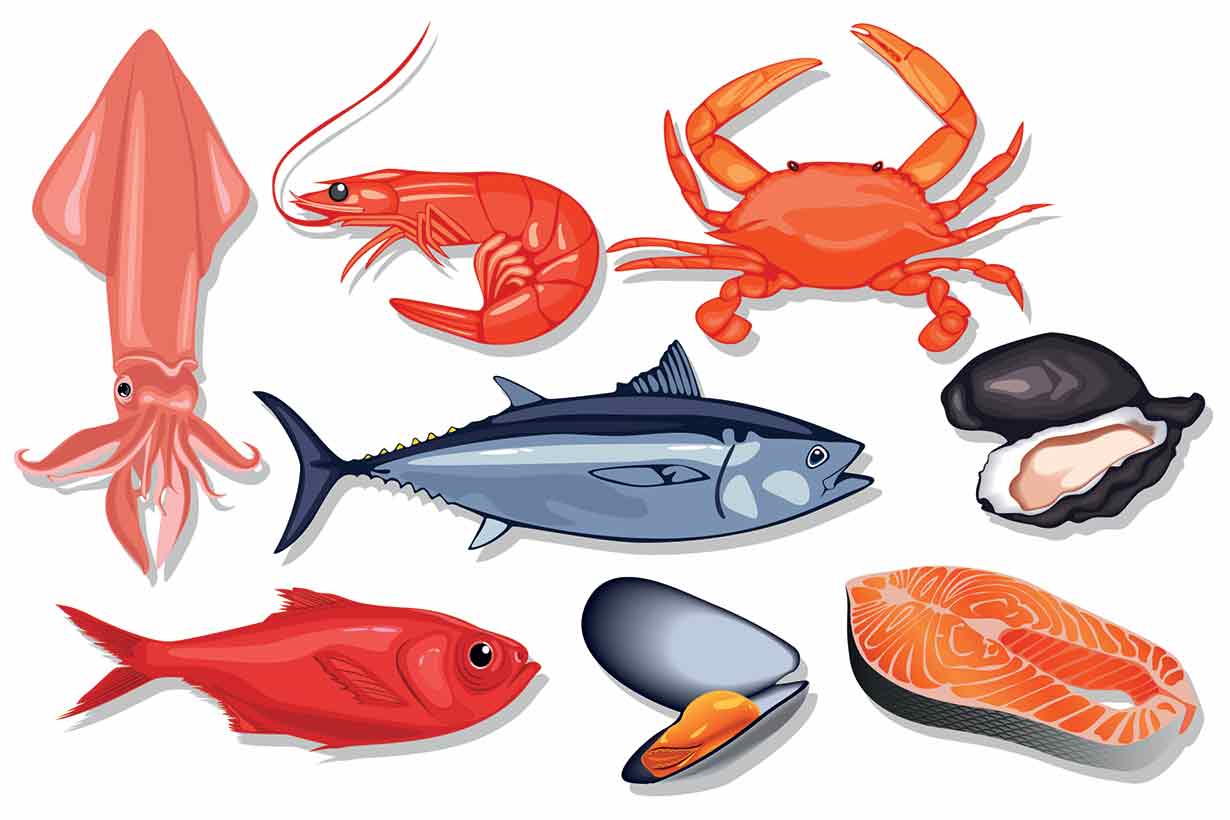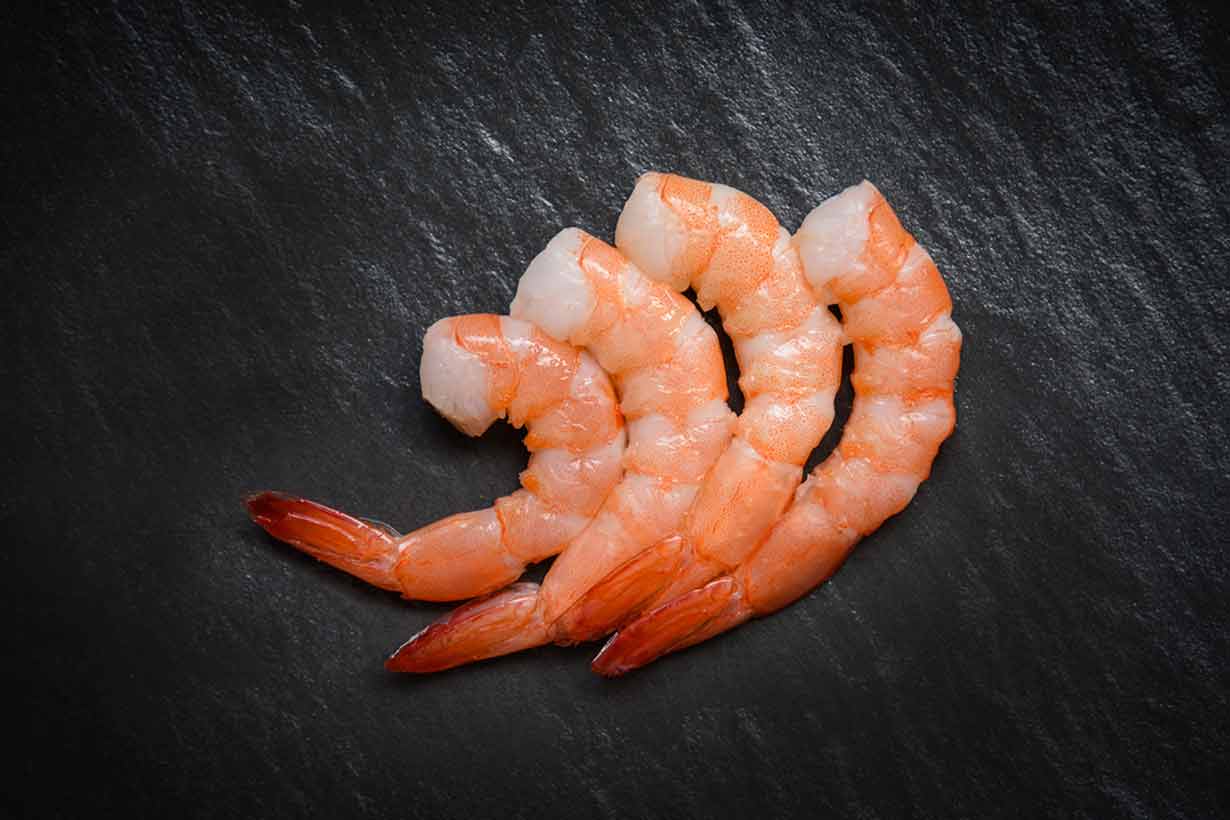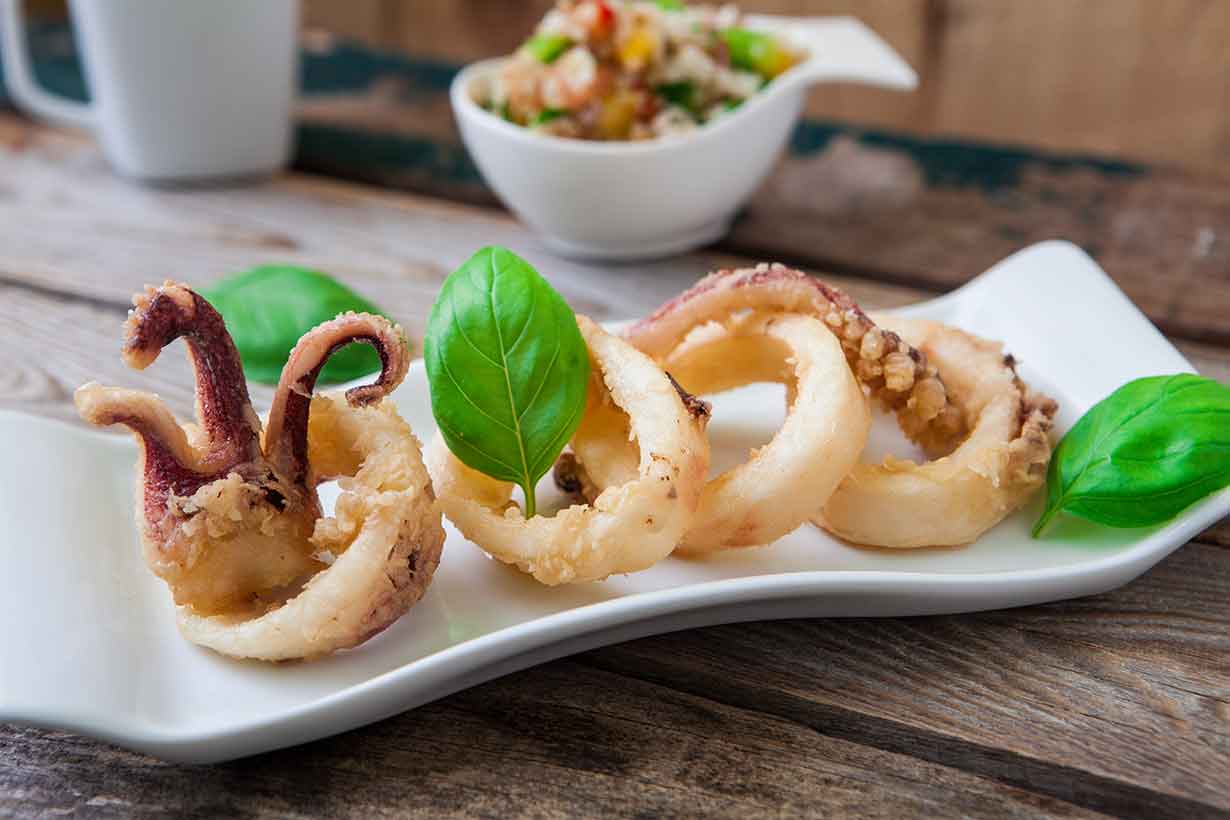Crawfish is a small shellfish that belongs to the same crustacean group as crabs, lobsters, and shrimp.
However, what exactly is crawfish, and is it a healthy seafood choice?
This article provides a complete nutritional breakdown of crawfish and examines its potential benefits and downsides.
Table of contents
What Is Crawfish?

Crawfish, also known as crawdad and crayfish, is a crustacean shellfish belonging to the decapod order (1).
In terms of appearance, crawfish looks like a baby lobster due to its small size. While it shares similar features to a lobster, the size is closer to that of a shrimp. Most adult crawfish have a length of approximately 7.5 cm (3 inches) (1).
However, there are more key differences between crawfish and other members of the crustacean group. For instance, most crustacean shellfish, such as crab, lobster, and shrimp, live in salt water.
In contrast, most species of crawfish are freshwater creatures that live in rivers, lakes, swamps, and marshes (1).
Humans have used crawfish as food for thousands of years, with fossils suggesting they were consumed at feasts 28,000 years ago (2).
In modern times, most global production occurs in Asia, specifically China. For example, in 2020, China produced 2.39 million metric tons of crawfish (3).
Louisiana in the United States is another central production area of crawfish, with an annual production of around 130-150 pounds (4).
Crawfish provide an excellent source of protein and a broad range of vitamins and minerals.
Nutrition Facts
The following table shows the nutritional values of cooked crawfish per 100-gram (3.5-ounce) serving (5).
The source of the nutritional data is the USDA; daily values have been calculated using USDA data and the FDA’s published daily values (5, 6).
| Name | Amount | % Daily Value (% DV) |
|---|---|---|
| Calories | 87 kcal | |
| Carbohydrates | 0 g | 0% DV |
| Fiber | 0 g | 0% DV |
| Sugars | 0 g | |
| Fat | 1.3 g | 1.7% DV |
| Saturated | 0.22 g | 1.1% DV |
| Monounsaturated | 0.25 g | |
| Polyunsaturated | 0.41 g | |
| Omega-3 | 0.18 g | |
| Omega-6 | 0.16 g | |
| Protein | 17.5 g | 35% DV |
| Cholesterol | 137 mg | 45.7% DV |
Vitamins
- Vitamin B3 (niacin): 10.4% DV
- Vitamin B5 (pantothenic acid): 10.2% DV
- Vitamin B6: 7.6% DV
- Vitamin B2 (riboflavin): 6.2% DV
- Vitamin B1 (thiamin): 4.2% DV
- Folate, DFE: 2.8% DV
- Vitamin A, RAE: 1.7% DV
- Vitamin C: 0.5 % DV
Minerals
- Copper: 64.4% DV
- Selenium: 62.2% DV
- Phosphorus: 19.3% DV
- Zinc: 13.5% DV
- Manganese: 9.4% DV
- Magnesium: 7.9% DV
- Iron: 6.2% DV
- Potassium: 5.1% DV
- Sodium: 4.2% DV
- Calcium: 3.9% DV
Benefits of Crawfish
Based on its nutritional profile, here is a summary of the key benefits of crawfish.
Rich In Nutritional Value (and Very Low In Calories)
The nutritional data shows that crawfish provides protein and a wide range of vitamins and minerals for very few calories.
With only 87 calories per 100-gram (3.5-ounce) serving, crawfish represents a simple, low-calorie way to increase the intake of numerous essential nutrients (5).
High Levels of Copper and Selenium
Crawfish contains many micronutrients, but the two most concentrated are the essential minerals copper and selenium.
Notably, a 100-gram (3.5-ounce) serving of crawfish provides more than half the recommended daily values for copper and selenium. This serving size provides 64% and 62% of the daily value for copper and selenium, respectively (5, 6).
Selenium is an essential mineral that plays a vital role in the immune system, DNA production, and keeping the body healthy (7).
Copper also has a critical role in human health, and its functions include energy production and roles in the nervous and immune systems (8).
An Excellent Lean Source of Protein
Crawfish is an excellent lean source of protein, meaning that it supplies a large amount of protein relative to its calorie provision.
For instance, 100 grams of cooked crawfish provides 17.5 grams of protein for only 87 calories (5).
This protein density compares favorably to many other protein sources, including some types of meat and legumes.
As a result, crawfish is an excellent option for those trying to increase their protein intake without adding many extra calories.
Contains Some Omega-3
Although the amount is relatively small, it is also worth noting that crawfish provides some omega-3 fatty acids.
Per 100 grams of cooked crawfish, this omega-3 content is 0.18 grams (5).
The type of omega-3 fatty acids found in crawfish are eicosapentaenoic acid (EPA) and docosahexaenoic acid (DHA). EPA and DHA, as they are commonly referred to, are the preformed and most bioavailable forms of omega-3 (9, 10).
A wide range of research supports EPA and DHA as beneficial for heart health and reducing cardiovascular mortality (11, 12, 13, 14).
Note: Oily fish offers higher levels than other seafood for anyone trying to increase their omega-3 intake.
Low Heavy Metal Content
Heavy metal contamination is a concern with seafood (and all food in general).
However, the heavy metal contents of different seafood can vary significantly.
Firstly, based on mercury data collected from forty-six samples of crawfish between 1991 and 2007, crawfish contained low mercury levels.
The mean mercury concentration among these 46 samples was 0.033 PPM, which compared favorably to seafood, including (15):
- North Atlantic mackerel: 0.05 PPM
- Haddock: 0.055 PPM
- Crab: 0.065 PPM
- Trout: 0.071 PPM
- Herring: 0.078 PPM
That said, mean mercury levels were higher than the lowest mercury seafood, such as clams, shrimps, oysters, and sardines.
A study published in 2017 examined the distribution of arsenic and other heavy metals in crawfish produced in Louisiana, United States (16). The findings from this study concluded that all heavy metals found within crawfish tissue were at acceptable levels for human consumption.
Potential Downsides
Generally speaking, crawfish is a nutritious food that offers several benefits.
However, it is worth noting that, depending on the context and the individual, it can also have potential downsides.
Crustacean Allergy
Shellfish allergy is relatively common and affects approximately 0.5-2.5% of the world’s population (17, 18, 19).
In the United States, the most common allergy adults report is shellfish, and it is the third most common allergy among children (20).
Notably, allergy to crustacean shellfish is far more common than shellfish like oysters and clams (mollusks) (21).
With this in mind, people with crustacean allergies should avoid crustacean species such as crawfish, crab, lobster, and shrimp.
If anyone suspects they may have a crustacean allergy, they should speak to their doctor to get an accurate diagnosis.
How To Use Crawfish
Like shrimp and other crustacean shellfish, crawfish can be a versatile ingredient that fits into numerous dishes.
Crawfish can be eaten by itself, or it can feature in dishes such as:
- Breaded and fried crawfish
- Chowder
- Gratin
- Pasta
- Pizza (as a topping)
- Salad
- Soups and stews
- Stir-fried rice
- Quiche
Common Questions
Here are the answers to some common questions about crawfish, their characteristics, and their nutritional values.
One hundred grams of cooked crawfish contains 137 mg of dietary cholesterol. 137 mg is 46% of the FDA’s recommended daily value of 300 mg for cholesterol. However, it should be noted that, for most people, dietary cholesterol only has a modest effect on blood cholesterol levels (22).
Crawfish and shrimp have relatively similar nutrition profiles. This is because both shellfish are a lean source of protein. However, the main difference is that shrimp has a slightly higher protein content while also being higher in calories (5, 23).
No, crawfish contains minimal levels of dietary fat. Per 100 grams cooked, the shellfish has only 1.3 grams of fat.
The main benefit of crawfish is that it provides a good amount of protein, selenium, copper, and several other micronutrients for a very small calorie provision.
Like other shellfish, crawfish spoil very quickly, even when refrigerated. For this reason, they are usually eaten as close to fresh as possible. However, frozen crawfish purchased from reputable seafood vendors can be stored in the freezer for a longer time. When buying crawfish or any shellfish variety, it is important to follow the storage instructions on the pack for food safety purposes.
Final Thoughts
Crawfish is not quite as well-known as other shellfish like shrimp and lobster.
However, it has similar taste characteristics, and it is just as nutritious.
There are not many foods that match crawfish as a lean source of protein that provides significant vitamins and mineral content.








